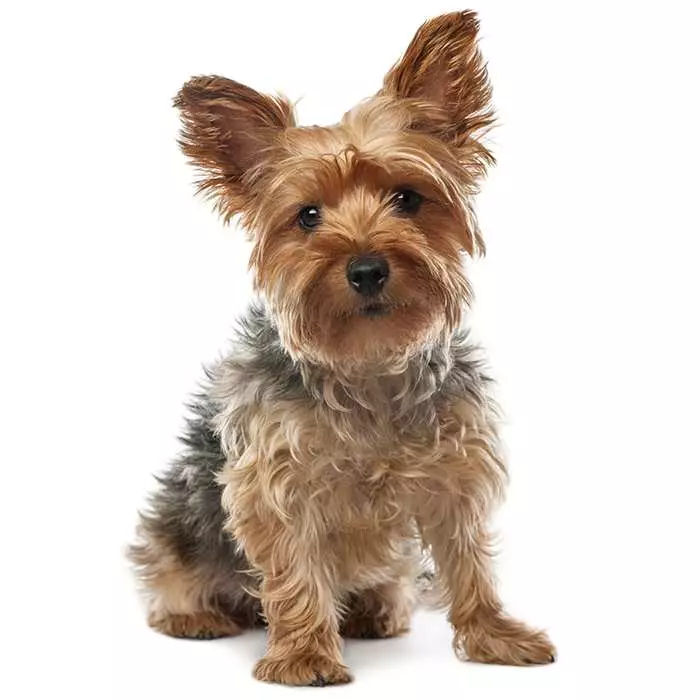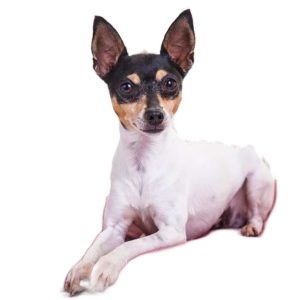Pug
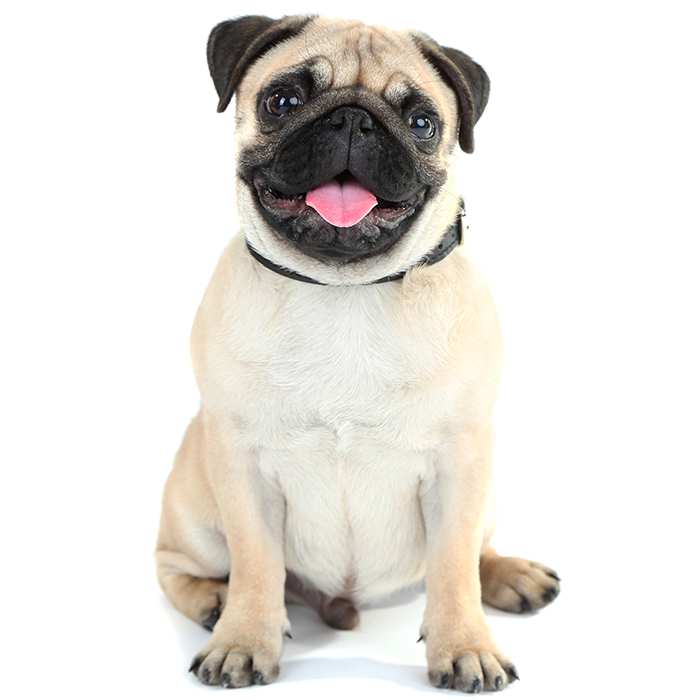

| Recommended for | Singles, families, the elderly |
| Breed Classification | Toy |
| Other names | The Pug Dog |
| Lifespan | 12 to 15 years |
| Size | Small |
| Temperament | Loyal, playful & loving |
| Intelligence | Average |
| Tendency to bark | Low |
| Maintenance Level | Low |
| Health Risk | This breed has an average probability of having health issues in its lifetime, hence it is one of the more affordable breeds to insure. |
Insuring a Pug?
Get award-winning cover with more benefits and up to 80% of eligible vet bills reimbursed. Find out about your cover options.
Get a quick quote
Is this breed right for you?
Try our breed selector quiz to find out your best matching breed!
Insuring a Pug?
Get award-winning cover with more benefits and up to 80% of eligible vet bills reimbursed. Find out about your cover options.
Get a quick quote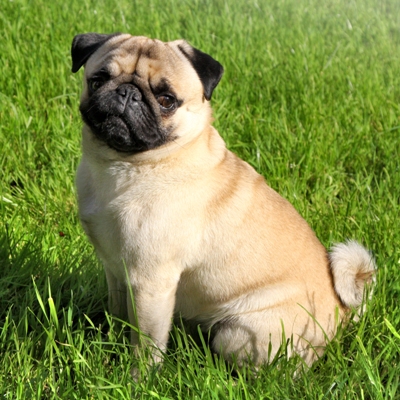
Breed history of Pugs
The Pug is one of the oldest dog breeds, believed to have originated over 2,000 years ago; however there is much debate over when and where it first appeared. It is widely accepted that Pugs or similar dogs were popular during the Chinese Song Dynasty.
In the 16th century they were imported to Europe and became very popular among European nobility; in fact, the breed became the official dog of the House of Orange after the Prince of Orange was rescued by a Pug named Pompey in 1572, having alerted him to the presence of assassins.
Pugs became vert well established all over Europe – they have been depicted in England, Spain, Italy and France. They were often employed as guard dogs and the military used them to track animals and people.
English painter William Hogarth owned many Pugs, which are often depicted in his works, and Napoleon Bonaparte’s wife Josephine used her Pug to carry messages to her family while she was imprisoned.
In the 19th century, Queen Victoria bred many Pugs, and her passion for the breed was inherited by her grandson King George V and great-grandson King Edward VIII. Her breeding efforts are credited with the development of the Pug we see today.
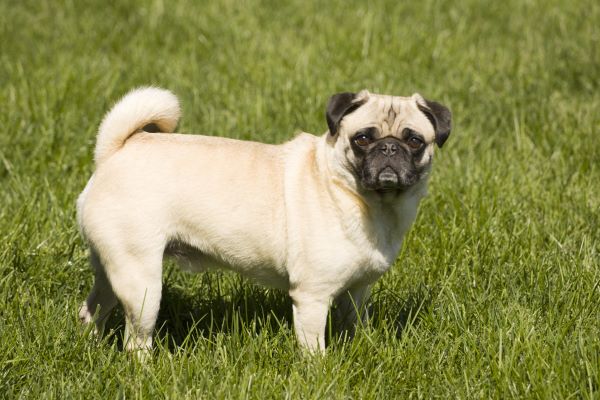
Physical description of Pugs
The Pug is a small breed of dog known for its wrinkly face and tightly curled tail. Modern Pugs tend to have square, compact bodies with deep chests, strong legs, small feet and well-formed muscles.
Pugs have either “rose-” or “button-” shaped ears. (‘Button ears’ ear flaps fold forward, with the tip lying close to skull to cover opening. ‘Rose ears’ are small drop ear which fold over and back to reveal the burr.)
The Pug’s lower teeth often sit further forward than the upper, and as a result most Pugs have under bites. The large round head, big, sparkling eyes, and wrinkled brow give Pugs a range of human-like expressions.
Their coat is fine, smooth, soft, short and glossy. It is most often is fawn-coloured, but can also come in apricot fawn with a black face mask, silver, and black.
| Weight range | Male 6 to 9 kg, female 6 to 8 kg |
| Height range | Male 30 to 36 cm, female 25 to 30 cm |
| Colours | Silver, apricot, fawn or black |
| Coat length | Short |
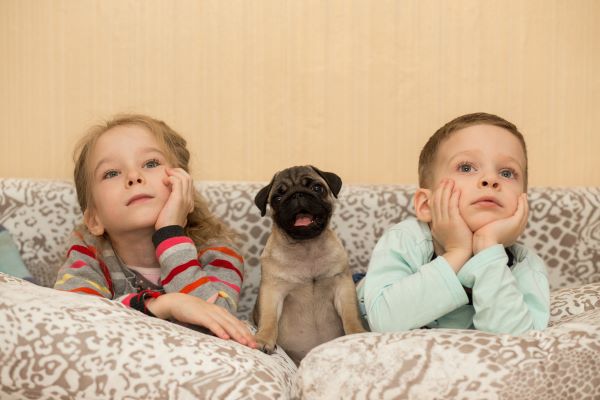
Pug personality and temperament
Even-tempered, charming and happy, Pugs are well-suited to many types of owners, including elderly people and families with young children. They were bred to be companion dogs and provide people with company, so are very loyal, affectionate and loving towards their owners and often follow them wherever they go. They are quite lazy by nature and tend to enjoy napping, which can make them a great low-maintenance companion.
They love being everywhere you are and are happiest living with you in your house and going with you when you go out. If you are unwilling or unable to share your life, house and in some cases your bed with a dog, then a pug is not for you. If you are away from your Pug for many hours a day, they are unable to do their job (of being your companion) and become bored and develop behavioural issues. They will tolerate being left at home alone for short periods of time, but a pug exiled to the backyard for extended periods of time is not a happy pug.
Pugs make good apartment dogs. They do not cope well in hot or cold weather and therefore should be kept indoors at a comfortable temperature. They must sleep indoors in a soft doggy bed (or in yours, if allowed!). Also, they tend to have rather poor road sense, so it is imperative that they are kept indoors or in an enclosed outdoor space.

Pugs with kids and other pets
Though strong-willed, Pugs are very rarely aggressive and are very fond of children. Mischievous, affectionate and playful, with an almost human-like personality, they usually get along well with young kids.
Pugs generally get along well with other pets and are good with other dogs. In fact, a pug will settle much more and be more content if they have a ‘furry friend’ in the household.
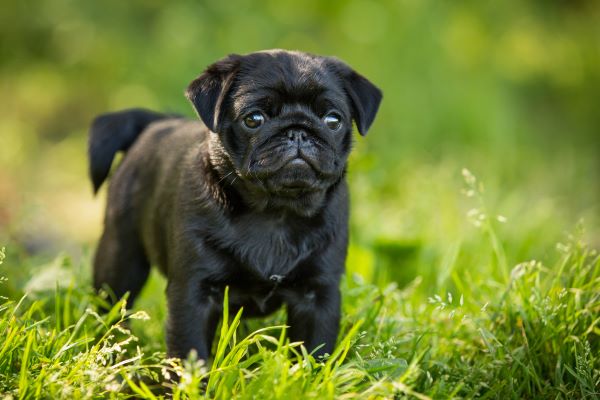
Pug training and exercise
Pugs can be quiet, placid and relatively inactive, but are also playful and lively at times. Given that they can be prone to obesity, owners should keep their Pug fit with daily opportunities for moderate exercise, such as walks or play sessions in the yard.
It’s essential to remember that as a short-faced breed, Pugs aren’t able to tolerate hot weather, and they can not be exercised in the heat. It’s far better for them to be indoors with the air-conditioner on. Unfortunately, swimming is not an option – most pugs can not swim and will drown easily.
Pugs live to please their people, so they are generally easy to train. Their feelings are easily hurt, and harsh training methods should never be used. Early socialisation and puppy training classes are recommended.
| Energy level | Moderate |
| Exercise requirements | Moderate |

Pug feeding and nutrition
The Pug should do well on a high-quality dog food that is appropriate to the dog’s age (puppy, adult, or senior) and activity level.
Pugs live to eat and are prone to obesity, so watch your dog’s calorie consumption and weight level. Given the opportunity, a Pug will happily spend much of the day snuggling on the sofa, which, combined with the breed’s fondness for eating, makes obesity a real possibility.
Check with your vet if you have any concerns about your dog’s weight or diet.

Pug care and grooming
The Pug’s short, smooth, glossy coat sheds year round and tends to shed heavily about twice a year. Their coats are quite easy to groom with a firm bristle brush to remove loose hair and only need to be bathed when necessary (although they should be dried immediately as they are sensitive to temperature).
Because pugs eyes are so large and prominent and they have no muzzle to protect them, they need particular care and monitoring. Their facial creases and nose rolls need to be cleaned frequently. Many pugs dislike their toe nails being cut so regular trips to a groomer or vet may be necessary for this purpose.
Health issues for Pugs
- Pug dog encephalitis is an inflammatory brain condition unique to Pugs, and which is inevitably deadly, causing the dog to seizure, circle, lose vision, fall into a coma and then die within a few days or weeks. Unfortunately there is no way to test for or treat the disease.
- Cheyletiella Dermatitis, also known as “walking dandruff”, is a skin condition caused by a mite. It is characterised by heavy dandruff down the middle of the back. Because these mites are transferrable, all other pets in the house need to be treated.
- Epilepsy is a general term for neurological disorders that bring on sudden and repeated seizures. Pugs are prone to idiopathic epilepsy, which are seizures with no known cause. There is treatment available for Pugs suffering epilepsy.
- Nerve Degeneration: As they age, Pugs may suffer from nerve degeneration, causing them to drag their rear, stagger, become incontinent or have difficulty jumping. It doesn’t appear to cause pain and is slow advancing, but medication is available to help certain symptoms.
- Corneal Ulcers are erosions of the cornea, the transparent outer membrane that protects the front of the eye. Due to the size and prominence of a Pug’s eyes, they can become injured easily or develop ulcers on the cornea. Symptoms include squinting and red or tearing eyes. If left untreated, ulcers can cause vision loss or rupture the eye.
- Dry eye is a result of the eye not producing enough tears. It can cause blindness if left untreated, but medication is available.
- Demodectic Mange is an irritating skin disease characterised by red, scaly skin and hair loss, that is caused by parasitic mites. These mites are normal and present in every dog, and typically do not cause any issues; however, a Pug with a weak immune system could develop demodectic mange.
- Hemi-Vertibrae: Pugs and other short-nosed dogs may have anomalous vertebrae. Sometimes very few of the vertebrae are affected and do not impact the dog’s quality of life, however dogs with extensive hemi-vertebrae have difficulty walking and can become paralysed. Surgery is an option for affected dogs.
- Hip dysplasa occurs when the thigh bone and hip joint do not fit together properly and may cause pain and arthritis later in the dog’s life. Many affected dogs are able to live relatively comfortably with the condition.
- Breathing difficulties are quite common inPugs. Apart from the fact that they snore loudly when asleep, Pugs can have various serious breathing problems, such as laryngeal collapse, that may require emergency surgery.
- Other: Staph infections, yeast infections, Legges-Perthes disease, patellar luxation and vaccination sensitivity.
Not all conditions are covered by Pet Insurance. For details of Bow Wow Meow Pet Insurance cover, refer to the Product Disclosure Statement.
What do Pug owners claim for the most?
- Otitis Externa
- Dermatitis
- Skin Allergy
- Corneal Ulcer
- Eye (ocular) Anomaly
Thinking about insuring a Pug
Thinking about insuring a Pug
Learn moreThinking about insuring a Pug
Learn moreFree engraved pet ID tag on sign up3
Customer Satisfaction
21 day cooling off
Life-long cover4

GapOnly® & easy claims
MORE INFORMATION
Pug Club of New South Wales Inc: http://www.pugclubofnsw.com/
Pug Club of South Australia Inc: http://www.pugclubofsa.com/
Pug Club of Victoria Inc: pugclubofvictoria.com.au
Pug Rescue and Adoption Victoria Inc: http://www.pugrescue.org.au/
Pugs SOS: https://pugs-sos.com/
Puglove: http://puglove.com.au/
Pug Patrol Rescue Australia: https://www.pugpatrolrescueaustralia.com.au/

